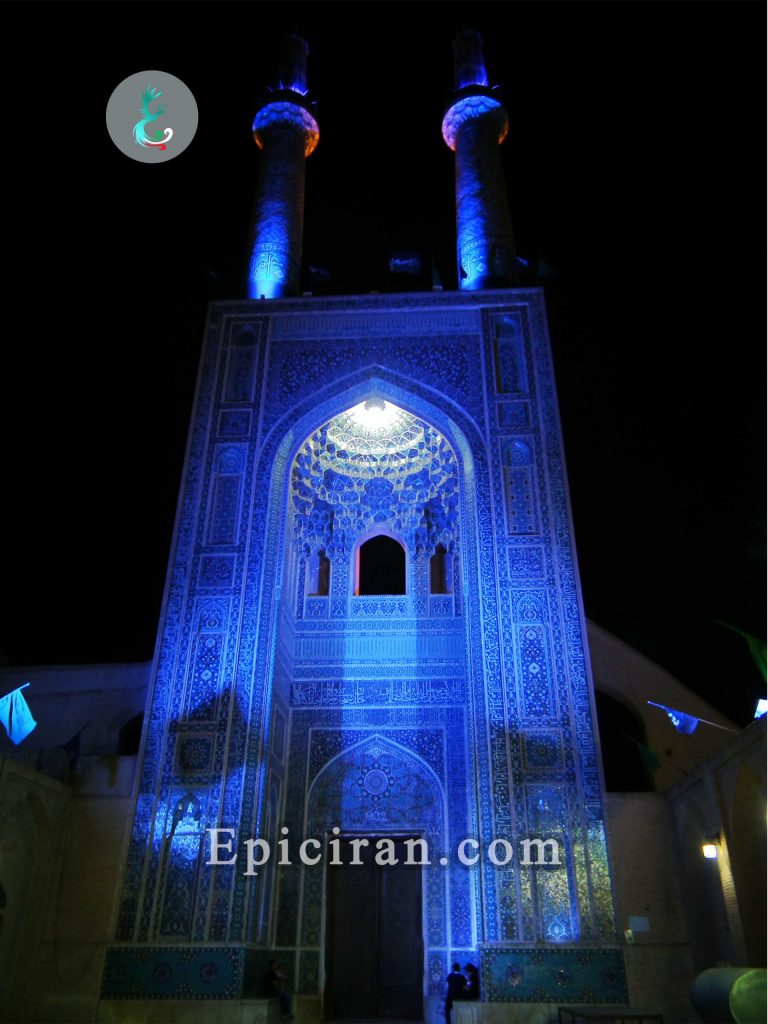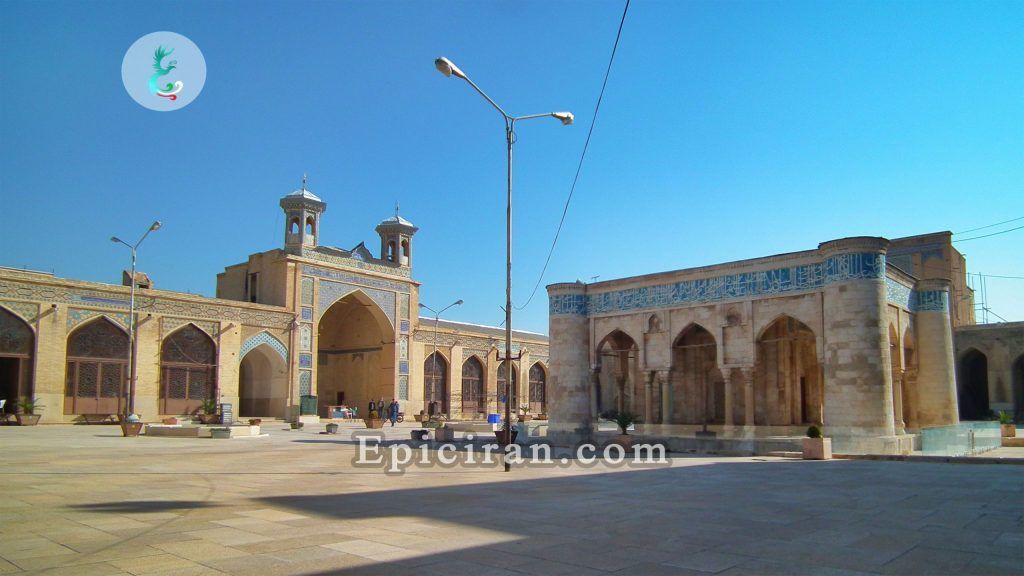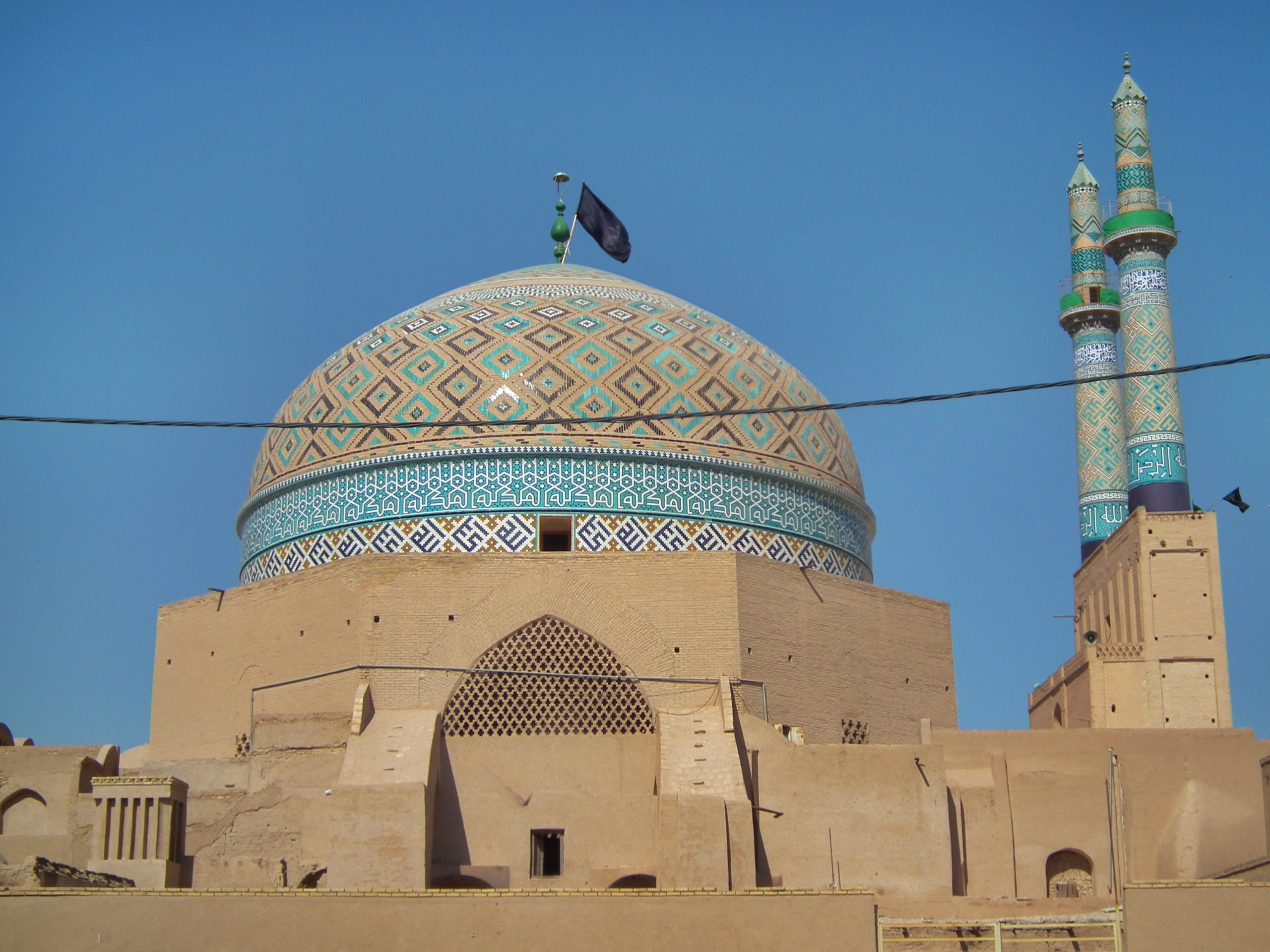Jame Mosque: What are the 10 most famous Jame mosques in Iran?
The Jame Mosque (Congregational mosque): The Jame Mosque, as the most important part of Islamic cities, has a special religious and political centrality and importance. Usually, there is a Jame Mosque or Jomeh(Friday) Mosque in the cities and a number of smaller local mosques around it.
In addition to being a place of daily prayers, these congregational mosques are also a place of Friday prayers, which is why they are also known as Jomeh mosques. They were also important as a political center in the past.
Typically, Congregational mosques were located in the most central part of the city and in connection with the two important elements of the market and the residential neighborhood.
We will introduce the most important comprehensive Jame Mosques in Iran:
Fahraj Jame Mosque
Fahraj is a village twelve kilometers east of the Yazd-Kerman road. The oldest mosque in Iran, which belongs to the first years of the sixth century AD. The method of construction of this mosque is very simple like the common style of architecture of the early Islamic centuries. Its building includes a Shabestan, courtyard, corridor, and minaret. This mosque is one of the mosques with two porches and one of its beauties is the bedrock designs on its eastern wall.
The bricks used in the mosque as well as its cradle arch are very similar to the architecture of the Sasanian era. The minaret of the mosque was built a few centuries later (probably the tenth century AD). The main entrance, which is next to the minaret, was built later.
Isfahan Jame Mosque
Isfahan Jame Mosque is located in the old part of Isfahan and is a very important mosque. This place contains a collection of 15th-century art of the Islamic era and its most beautiful and important part is related to the Seljuk era.
At first, a mosque was built in the early days of Islam with an open courtyard and wooden pillars here, of which nothing remains, it is only mentioned in the documents of tourists that visited the mosque before.
The current building of Isfahan Jame Mosque is built with a plan of four porches and includes the following sections:
- Shabestan related to the Daylamites era with circular columns and beautiful plastering.
- The dome and forty columns(chehel-sotun) around it (known as the dome of Khajeh Nizam al-Mulk, the Seljuk minister) located on the south porch of the mosque 1073-1093 AD.
- The dome is known as the Khaki Dome in the northern part (attributed to Taj al-Mulk, another Seljuk minister) in 1088 AD.
- The porch is known as “Shagerd” platform, was built in the Seljuk period and its decorations were added during the Ikhani and Safavid times.
- The Saheb Platform, related to the Seljuk period whose decorations and minarets were added in the Qaraqoyunlu and Safavid periods.
- The western porch, known as Sofeh(platform) Ostad, was built in the Seljuk period, but its tiled decorations belong to the Safavid period.
- -The Platform is known as Abdul Aziz, which was completed during the Muzaffarid period.
- The north porch known as the Darvish platform was built in the Seljuk period and decorated in the Safavid era.
- Oljaito Mosque and Mihrab, which was added to the mosque in 1311 AD.
- The building in the middle of the central courtyard and its pond belongs to the Shah Abbas period.
Isfahan Jame Mosque has several entrances, the oldest of which dates back to 1121 AD. Amazing plaster decorations, tiling, and brickwork can be seen in Isfahan Jame Mosque.
Yazd Jame Mosque
Yazd Jame Mosque was built in the twelfth century AD but was destroyed and replaced by the current Yazd Jame Mosque. Studies show that the building of the old mosque was located northeast of the current courtyard.
The new mosque consists of a rectangular courtyard with a dome and a porch facing the qibla, with Shabestans on either side. The entrance of the Yazd Jame Mosque has been repaired several times and has features from the twelfth century AD. There are also two minarets above it. The construction of this building has been done in several stages in different years.
Among the beauties of Yazd Jame Mosque is the decoration inside the dome with geometric designs of Hezar Baf, and also the stellar design, including seven-pointed stars with light blue and white colors, has been executed on a pea background. The top cover of the dome is tiled with repetitive designs including rhombus patterns inside another.
The Mihrab of Yazd Jame Mosque was designed and decorated in the 11th century AD with mosaic tiles and Mogharnas arch and the inner body with eight rectangular and square frames of tiles on a pottery background.

Atigh Jame Mosque of Shiraz
One of the famous buildings of the early years of Islam in Shiraz, the original construction of which is related to the year 894 AD by the order of Amr ibn al-Layth, Over time most of this building has been destroyed. In 1351 AD, Abu Ishaq Inju added the Khodakhaneh to Atigh Jame Mosque. Atigh Jame Mosque was rebuilt in 1625 by Shah Abbas I. One of the interesting decorations of this building is the stone inscription on which the surahs of the Quran are written it.

Borujerd Jame Mosque
It is one of the important mosques in western Iran. With the plan of a porch built in the Seljuk era. The oldest part of it is the southern Shabestan and its dome, which is similar to the quadrangles of the Sasanian period. The north porch was rebuilt during the Safavid period and two minarets were added to it. It has brickwork, tiling, and plastering that has been destroyed by natural troubles.
Varamin Jame Mosque
Varamin Jame Mosque was built in the Ilkhani era in 1322 AD. The building has four porches and includes the entrance at the north, the shabestan at the south, the west and east porticos, the mezzanine, and the dome. The most important part of the building is the dome, which is located on top of a square room and is decorated with plaster and mirrors. The tall and elongated head of the building is decorated with arches on both sides with mosaic tiles of the azure background and a combination of tiles and bricks. Varamin Jame Mosque was rebuilt during the reign of Shahrokh Teymouri and the plaster decorations and the construction of the mihrab, shabestan and porches belong to the year 1418-1442 AD.
Kashan Jame Mosque (Sang Square)
Kashan Jame Mosque is located in the eastern part of the city bazaar and near the fort and fence of the Seljuk period of Kashan and is one of the oldest Islamic buildings in Kashan. Probably the original construction of the mosque dates back to the time of the Khwarazmian dynasty. The only remaining part of the original building is its golden mihrab, which was taken out of Iran in 1890 and is kept in the Berlin Museum.
One of the beauties of the Kashan Jame Mosque is the Minbar that which is decorated with mosaic tiles and an inscription with a rak’ah line can be seen on its body.
Other points of the mosque are the inscriptions on the walls of the mezzanine and the front, which include orders, rulings, administrative orders, social issues, and the number of them is 11 tablets and belongs to the 12th to 17th centuries AD.
Saveh Jame Mosque
Saveh Jame Mosque was built during the Safavid dynasty (Shah Ismail) on the site of a ruined Seljuk mosque and, like most Safavid mosques, has four porches. The dome of the mosque is covered with turquoise tiles and its interior is decorated with turquoise hexagonal tiles. This mosque has a beautiful plastered mihrab with two Kufic inscriptions.
Ardestan Jame Mosque was built in imitation of the Isfahan Jame Mosque, which was built in the early Islamic centuries and its development dates back to the Seljuk era. This mosque also has several sections, each of which was built in a specific period of time.
Ardestan Jame Mosque
The plan of the mosque is four porches and its beauty is in the interesting decorations of plastering and brickwork. Ardestan Jame Mosque has been renovated many times in the following centuries and it is available in its southern porch by the order of Shah Abbas. This building also includes various other buildings besides the mosque, including the caravanserai, the school, and the water storage.

